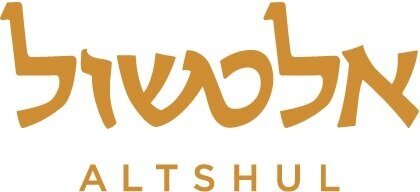Altshul Musaf Guidelines
Thank you so much for volunteering to lead Musaf at Altshul this Shabbat!
Since there are many details of the service that vary from community to community, we have prepared an outline of the Altshul service that will ideally cover all issues and questions that you may have in your preparation. Please feel free to respond to this email if anything is unclear or needs further explanation.
Most importantly, though, we believe that tefilah b'tzibbur (public prayer) can and should be inspiring and uplifting. On this particular week, we are entrusting that responsibility to you. To that end, we greatly appreciate the effort you put into choosing melodies that people can sing along with and that might be different from the standard ones that are frequently used. If the melody is new, singing it once through as a niggun is often helpful. Singing is often the highlight of Shabbat morning services, and we look forward to having you lead us in it. It is our hope to finish Musaf on a normal Shabbat at 12PM.
Musaf
Please come up to the Amud when the brachot for the haftorah are complete.
Yekum Purkan and Prayer for Congregation
(Gabbai leads) Prayer for captives, sing Acheinu
(Gabbai leads) Prayer for Israel, sing Yehi Shalom
(Gabbai leads) Prayer for the USA
Announcing the New Month (some weeks -- ask the Gabbai if this should be said)
Av Harachamim (most weeks -- ask the Gabbai if this should be said)
Ashrei
The Torah will be handed to you. The person who did hagbah will follow you as you take the torah down the aisle and back.
Eitz Chayim
Once the torah is put away a gabbai will announce the d’var torah. You can sit down. Once the d’var concludes, you’re back on with the Chatzi Kaddish.
Half Kaddish
Musaf Amidah
At the end of the silent Amidah, look at a gabbai to confirm when to start the repetition.
If it is your practice to add the Imahot in the body of the first beracha, please do so (Sarah, Rebecca, Rachel, and Leah only please). However, please do not alter or change the concluding portion of the bracha (i.e., “Baruch ata hashem magen avraham”).
Continue with a full repetition of the Amidah. We encourage you to plan in advance to use creative tunes for the Kedushah. But please do not pick tunes that require you to repeat words in the beracha of the Kedushah (the last line), as repeating these words poses some halachic problems. Please remember to stand still with your feet together during the entire repetition and especially the Kedushah.
Recite the entire paragraph of Modim out loud (while the kahal says the congregational paragraph).
Remember to add Birkat Kohanim in the repetition.
Begin Kaddish Shaleim immediately at the end of the repetition.
The order for the rest of the service is below. The items with a star next to them will be called out to the community by one of the gabbaim.
Ein Keiloheinu
Amar Rabbi Elazar
** Kaddish d’Rabbanan
Aleinu
** Mourner’s Kaddish
Announcements
** Adon Olam
The Chief Gabbai leads Kaddish d’Rabbanan and Mourner's Kaddish aloud. It helps to keep an appropriate pace. If you would prefer to be the one to lead it, please tell a gabbai in advance. It’s just very important that either the Gabbai or you leads this, so as to ensure that it is said at a pace that is comfortable for all.
After the Mourner's Kaddish, a member of the leadership team will deliver some announcements. The final announcement will provide page numbers for Adon Olam. Then please conclude with Adon Olam. You will probably have some kid accompaniment for Adon Olam. :-)
Please feel free to contact us with any questions or if you would like to go over your davening with someone. We really appreciate your putting the time into making Altshul the special davening community that we aspire to be.
A quick note about davening at Altshul:
While there are certain liturgical and halachic standards that we try to maintain at Altshul, we also believe that davening is most beautiful when daveners express their own styles in the way they lead services. Keeping in mind the bounds of what’s above, we encourage you to be creative and to try new things. Below are some examples:
Nusach: there are a few musical nusachim (melody modes) that are used for Musaf, depending on the custom of the congregation (Ashkenazic, Sefardic, Ari, etc.). Feel free to use any of these, depending on your presonal custom.
There are many parts of Musaf with popular melodies associated. Feel free to pick a few to sing. Some examples: Ashrei, Lmaan Achai v’Reyai, Hashem Oz, Tov L’Hodot, Ma Gadlu, and Tzadik Katamar.
If it is your practice to add the Imahot in the body of the first beracha, please do so. While it’s Altshul’s practice to only include Sarah, Rebecca, Rachel, and Leah and to avoid changing the chatima (concluding blessing), we really do encourage you to add the Imahot if it’s meaningful to you.
Feel free to add in niggunim (wordless melodies) where you deem appropriate. The most common place this is done is before the repetition of the Amidah, and often daveners will use this moment to introduce a new melody they plan to use in their repetition.
If you’re looking for some musical inspiration, there are tons of resources online. Here are some examples:
This list is not exhaustive and there may be opportunities for other modes of personal variation. Please check with a gabbai if you’re considering other changes not mentioned above so we can all discuss together.
